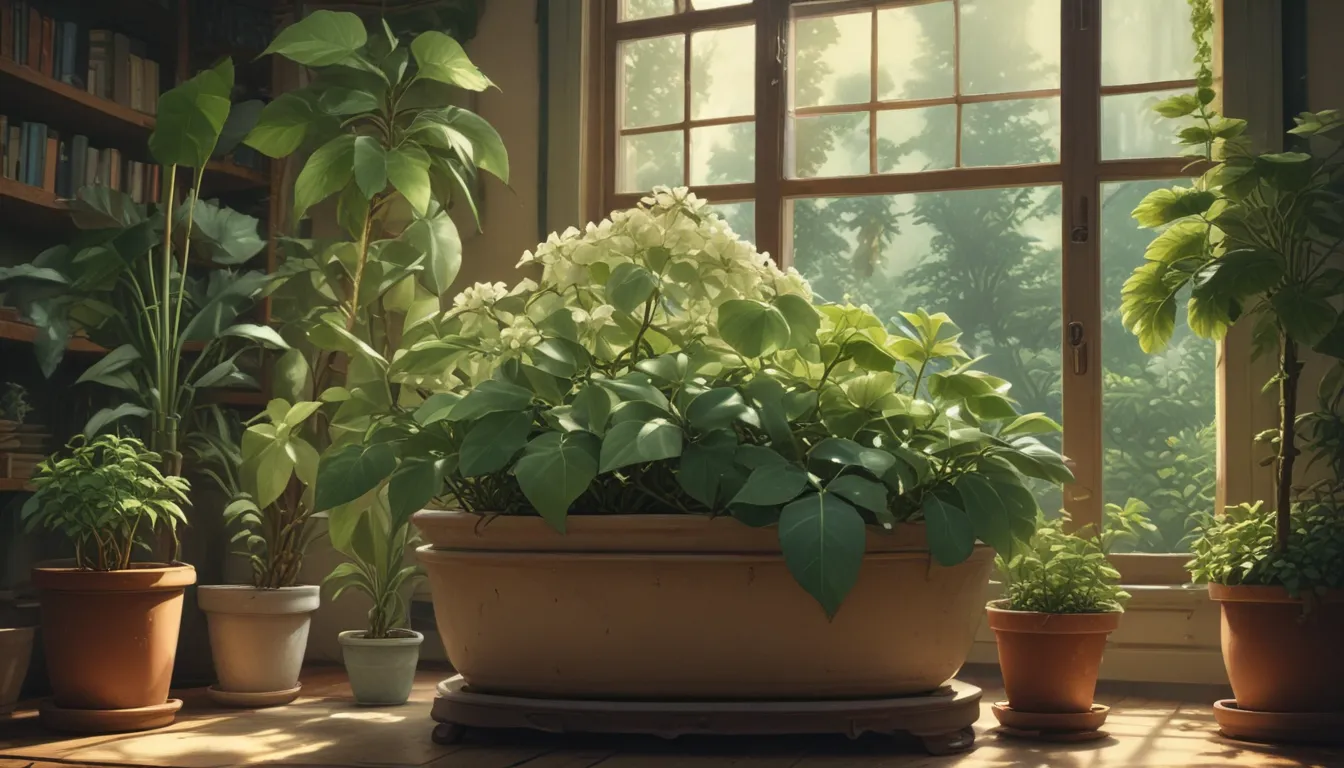All About Hoya: A Comprehensive Guide to Growing and Caring for Hoya Houseplants

Hoyas are one of those houseplants that might seem unassuming at first glance. But once you take a closer look, you’ll find yourself mesmerized by their beauty. With a wide variety of leaf colors, shapes, and textures, these climbing and trailing houseplants are sure to capture your heart.
And if that wasn’t impressive enough, hoyas also produce stunning blooms that are just as fragrant and striking as those of garden ornamentals. The best part? You can grow them indoors! So, get ready to embark on a hoya adventure with us as we delve into everything you need to know about these captivating plants.
Cultivation and History of Hoyas
Hoyas belong to a genus of vines and shrubs native to tropical and subtropical regions in Asia and Oceania. With over two to three hundred species – and counting – these epiphytes are known for their vining and trailing growth habits.
Featuring evergreen foliage in a wide range of leaf colors, sizes, and textures, hoyas make a versatile addition to any indoor space. From shiny green leaves to variegated and crinkled textures, there’s a hoya for every plant lover.
One fascinating aspect of hoyas is their long, bare vines or “whips” that eventually grow aerial roots and leaves. These plants are meant to seek out trees as support, mimicking their natural habitat in the forest.
Hoya flowers are a sight to behold, with fragrant clusters in various colors, typically star-shaped with contrasting centers. Fun fact: since many hoyas are pollinated by moths, their flowers tend to be more fragrant at night.
Named after botanist Thomas Hoy by Robert Brown, hoyas are also known as “porcelain flowers,” “honey plants,” and “wax plants.” The thick, succulent leaves of hoyas have earned them the nickname “wax plants,” while their waxy-looking flowers are another source of inspiration.
But a word of caution: some hoyas release a white sap that can be irritating, so handle them with care. While most hoya species are considered safe for pets, it’s best to keep them out of reach of curious pets and kids.
Propagating Hoyas: A Beginner’s Guide
Hoyas can be propagated from seeds, leaf cuttings, stem cuttings, or through layering. While seeds have a short viability window, stem cuttings and layering are the easiest methods with higher success rates.
From Stem Cuttings:
- Use sterilized scissors to take a cutting with one to two nodes.
- Remove the bottom leaves to expose the node where roots will grow.
- Use rooting hormone powder or gel for faster root development.
- Root the cutting in sphagnum moss or coconut coir until roots form.
- Once rooted, pot up the cutting in a well-draining medium.
By Layering:
- Place a vine on moistened potting mix while still attached to the parent plant.
- Use a rock or floral pins to hold the vine down until roots develop.
- Water regularly and once rooted, sever the vine from the parent.
How to Grow Healthy Hoyas
Ensuring your hoya thrives requires attention to a few key factors:
Light:
Place your hoya in bright, indirect light, although some species can tolerate medium light levels. Avoid direct sun exposure, especially in the afternoon.
Temperature:
Hoyas prefer temperatures around 70°F and can be sensitive to cold drafts and hotspots. Keep them away from heating sources and maintain consistent temperatures.
Water:
Allow the top inch or two of soil to dry out before watering. Adjust watering frequency based on the plant’s species, potting mix, and environmental conditions.
Humidity:
With tropical origins, hoyas appreciate moderate humidity levels. Grouping plants together or using a pebble tray can help maintain humidity levels.
Soil:
Use a chunky, well-draining potting mix with a slightly acidic to slightly alkaline pH. Choose a mix with pumice or coconut husks for optimal drainage.
Fertilizing:
During the growing season, fertilize your hoya with a general houseplant fertilizer to provide essential nutrients for healthy growth.
Pruning, Maintenance, and Encouraging Flowering
Pruning your hoya can help create a bushier plant and propagate new cuttings. Use sterilized tools and apply cinnamon to cut stems to prevent infection.
Support your hoya’s growth by trellising or staking its vines, allowing it to climb and trail in various directions. Repot your hoya only when it’s root-bound and avoid frequent repotting.
To encourage blooming, provide bright, indirect light, a rest period in the winter, and use a specialized bloom booster fertilizer. Prepare for nectar production during flowering seasons.
Selecting the Perfect Hoya Cultivar
From the popular H. carnosa to the unique H. kerrii, hoyas offer a wide range of cultivars to choose from. Consider factors like leaf shape, color, and growth habit when selecting a hoya for your home.
While H. carnosa is a classic choice with various varieties, H. kerrii, also known as the sweetheart plant, is a charming option for special occasions. Explore different hoya cultivars to find the perfect match for your plant collection.
Managing Pests and Diseases for Healthy Hoyas
Hoyas are susceptible to common pests like aphids, mealybugs, and scale insects. Keep an eye out for these pests and treat them using natural solutions like neem oil and organic insecticides.
Prevent diseases like botrytis blight, edema, and root rot by maintaining proper watering practices, adequate airflow, and optimal growing conditions. Regular inspections and proactive care will help keep your hoya healthy and pest-free.
Best Uses for Hoya Houseplants
With their trailing vines and vibrant blooms, hoyas can be used in various ways to enhance your indoor space. Hang them in baskets, train them on trellises, or mount them on kokedamas for a unique display.
Hoyas are pet-friendly and air-purifying plants, making them a safe and beneficial addition to any home. Use hoyas as companions for other houseplants or create a green oasis with a collection of different hoya species.
Let your hoya bring joy and beauty into your home with its unique foliage, charming blooms, and easy-care nature. Embrace the hoya rabbit hole and discover the wonder of growing and caring for these captivating houseplants.
So, are you ready to let your hoya brighten up your space and bring a touch of natural beauty into your life? Share your hoya journey with us in the comments below and showcase your thriving plants!
Remember, when it comes to hoyas, the possibilities are endless, and the joy they bring is boundless. Let your hoya journey be filled with growth, beauty, and a touch of green magic in every leaf and bloom.
Remember, the journey of caring for your hoya is filled with endless possibilities and boundless beauty. Let your hoya journey be a source of growth, joy, and natural wonder in every leaf and bloom.





